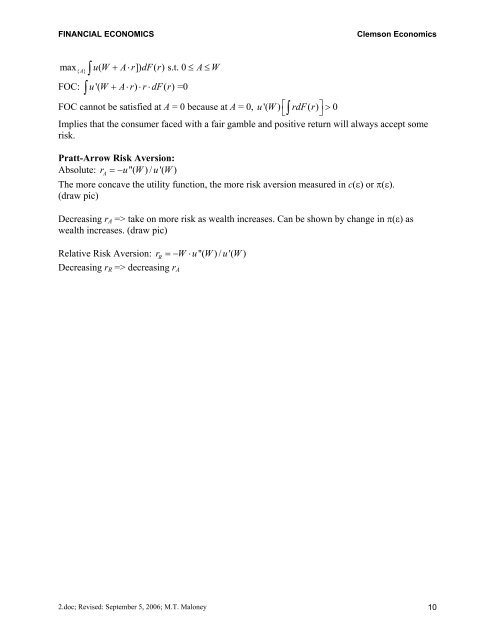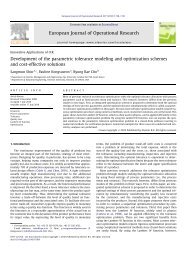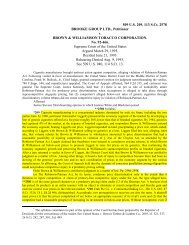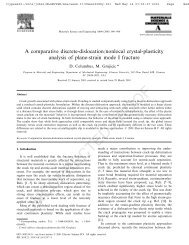Fisher Separation Theorem & Consumer Optimization 1. TWO ...
Fisher Separation Theorem & Consumer Optimization 1. TWO ...
Fisher Separation Theorem & Consumer Optimization 1. TWO ...
Create successful ePaper yourself
Turn your PDF publications into a flip-book with our unique Google optimized e-Paper software.
FINANCIAL ECONOMICS Clemson Economics<br />
∫<br />
∫<br />
max { A} uW ( + A⋅r]) dF( r) s.t. 0 ≤ A≤W FOC:<br />
u'( W + A⋅r) ⋅r⋅dF( r)<br />
=0<br />
FOC cannot be satisfied at A = 0 because at A = 0, u'( W ) ⎡ rdF( r)<br />
⎤> 0<br />
⎣ ⎦<br />
Implies that the consumer faced with a fair gamble and positive return will always accept some<br />
risk.<br />
Pratt-Arrow Risk Aversion:<br />
Absolute: r =−u''(<br />
W) / u'( W)<br />
A<br />
The more concave the utility function, the more risk aversion measured in c(ε) or π(ε).<br />
(draw pic)<br />
Decreasing rA => take on more risk as wealth increases. Can be shown by change in π(ε) as<br />
wealth increases. (draw pic)<br />
Relative Risk Aversion:<br />
Decreasing rR => decreasing rA<br />
r =−W ⋅u''(<br />
W) / u'( W)<br />
R<br />
2.doc; Revised: September 5, 2006; M.T. Maloney 10<br />
∫
















